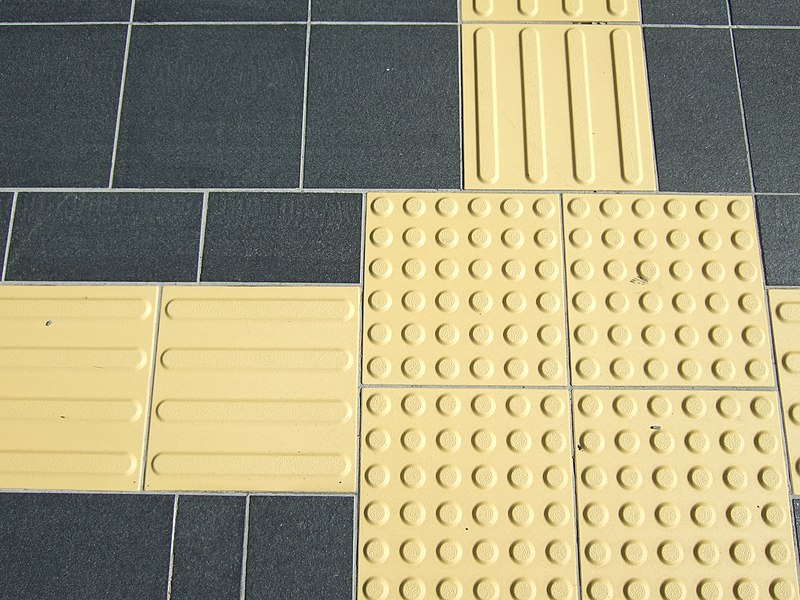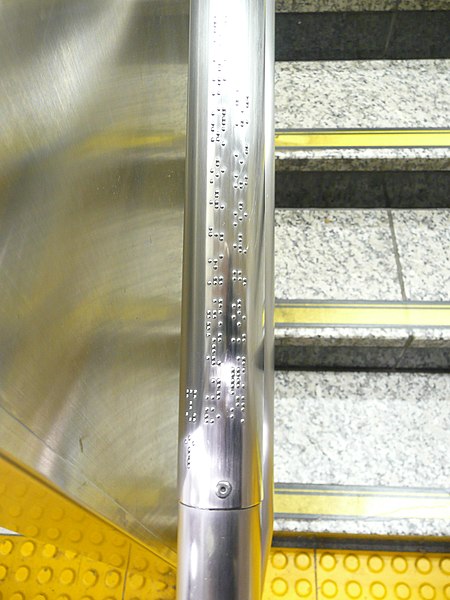Blind Accessibility in Japan
Published: March 2024Tags: #accessibility #blindness #travel
Contents:I recently travelled to Tokyo, Japan, and was was amazed by how accessible it was for the blind and visually impaired! Here I will share my experiences traveling in Tokyo as a visually impaired person.
Public Transportation
The train system made the biggest impact to the overal accessibility in Japan and I was impressed! The trains are fast, effective, and easy to use, and the rail system had very good coverage of everywhere I needed to go.
Using the trains it seems I can go just about anywhere whether it is a short distance or a long distance away. When navigating the Tokyo prefecture, there is always a train station in walking distance from me and the trains come by very frequently. The trains for shorter distance travel within the Tokyo prefecture arrive every 2 minutes!
Since the trains depart so frequently, there is minimal planning required. This makes trips involving transfers to a second or third train very seamless; you don't have to worry about waiting long for a train in another leg of the journey. Longer distance trains arrived less frequently, but not by much. I can't recall ever waiting more than 15 minutes for a train (though I only made two daytrips out of Tokyo).
Context: In Southern California where I live, there are many areas that are completely inaccessible by public transportation. Each city has a different transportation system with different levels of reliability. On most routes, the busses arrive once per hour. Because of the long wait times, you will find trips involving transfers to other busses will balloon travel time significantly. Travelling to an adjacent city takes me at least an hour and half: a distance that is quite small and would take about 15 minutes by car.
Payment Methods
There are a few payment options for the trains in Japan. When you arrive at the station, you can buy a ticket with cash using the machines at the entrance. The ticket machines have braille and spoken content to make them more accessible for the visually impaired. Many stations also have a service desk where you can buy tickets from an attendant. You can also get a Suica card which can be loaded with money to pay for trips.
I opted to add a digital Suica card into my Apple Wallet. This allowed me to tap my phone at the turnstyle to enter and exit the stations. I could load money into my Suica account with other cards in my apple wallet whenever I wanted to. The fare was automatically calculated and deducted from my card when I tapped my phone at the turnstyle to exit the station at my destination. Additionally, I can see my current balance, the receipts of each train journey I've taken, and a map showing where I entered and exited the train for that journey all from the Wallet app.
You can use Suica for most travel. The one exception is with longer distance travel with reserved seats. In these cases, you need to buy a "Super (limited) Express Train" ticket to reserve a seat on the train, in addition to the basic fare which can be payed with Suica.
Fare Prices
In terms of the cost, I found trains to be very affordable. The median amount I payed per trip in my 10 days in Tokyo was ¥178 which equates to $1.18 USD at the time of writing. When I traveled to Kamakura (a 40 mile journey, taking about an hour), I payed ¥945, equivalent to $6.24.
Context: The bus fare in my city is a $1.25 flat fee, and costs as much as $2.50 in some adjacent cities. The fee must be payed again for every bus you board regardless of distance traveled. If I route a trip to a nearby city (half the distance as my Kamakura trip), the trips routed by my phone are 3 hours long. They use between 3 and 6 busses, costing between $5.25 and $8.50 in total. Thats a trip that takes 3 times as long for half the distance!
Train Station Accessibility
Train stations are well-designed with many accessibility features ensure they are easy to navigate for the blind.
Tenji Blocks
In many parts of Tokyo, including every trainstation I've been to, there are tactile yellow Tenji Blocks on the floor. The bright yellow color makes the blocks easy to see for people with low vision (and for guide dogs to recognize), and the tactile patterns make them accessible for us to feel with our canes or under our feet.

Blocks with truncated domes (dots) are warnings that indicate a change ahead such as the end of a train platform or a street crossing.
There are also blocks with straight parallel lines, which indicate a path you can walk along. I found these lined blocks to be extremely useful! They allow you to travel with the flow of foot traffic and feel the tenji blocks underfoot to know when a path could branch into multiple areas. I was impressed by the usefulness of these blocks. Without these, a white cane user with more severe vision loss would have to stay close to the walls and feel for openings or branching paths in addition to using auditory information to orient themselves. This method can be challening in areas that are very large with many connecting areas, especially if there has a lot of foot traffic (like a train station!).
Auditory Cues
In the train station, there are many sounds going on all the time that the average traveller might dismiss or ignore, but these signals convey important information to help the blind navigate.
When you enter or exit the train station, a "ding-dong" sound indicates the location of the ticket gates.
Many stations also have a bird chirping sound which indicates the location of the stairs to the train platform.
At the train platform there are announcements about the trains arriving in Japanese and English so you can know if it is the correct train.
There is also the Hassha Merodi: the train departure melody. This is a melody that plays when the train arrives at the platform and opens the doors. The melody indicates that people can enter or exit the train, and a few seconds after the melody stops, the doors will close. A fun part of the Hassha Merodi is that most stations have a unique melody so you can hear a different one at each location. The composer (former keyboardist for Caseopia) wrote over 170 of these melodies!
While on the trains themselves, the train says the name of each stop out loud in Japanese and in English as well as displaying it on a screen overhead.
Braille
Braille is very common in Japan. Ticket machines, train seat numbers, vending machines, signs and maps, and even buttons on their toilets all have braille on them. There was even braille on the handrails for the stairs at the train platform. The braille on these handrails indicate information about the platform you are entering, conveying the same information that is on an overhead sign above the stairs.

Overall Accessibility in Japan
While the trains provide a higher degree of mobility to me than I've experienced anywhere, the accessibility features do not end there.
The same well thought out designs that are applied to the train stations are also found everywhere when out and about in the city. Braille and auditory cues are very common. Tenji blocks are used throughout the cities. Many elevators are talking elevators which announce the current floor to the user when the door opens. In busy urban areas, the signal to cross the street has Accessible Pedestrian Signals (APS systems) which play a noise to denote when to cross the streets. Many of these APS systems also include a button that makes the duration of the cross signal longer.
With all this said, Tokyo is without a doubt the most blind accessible place I've ever visited!